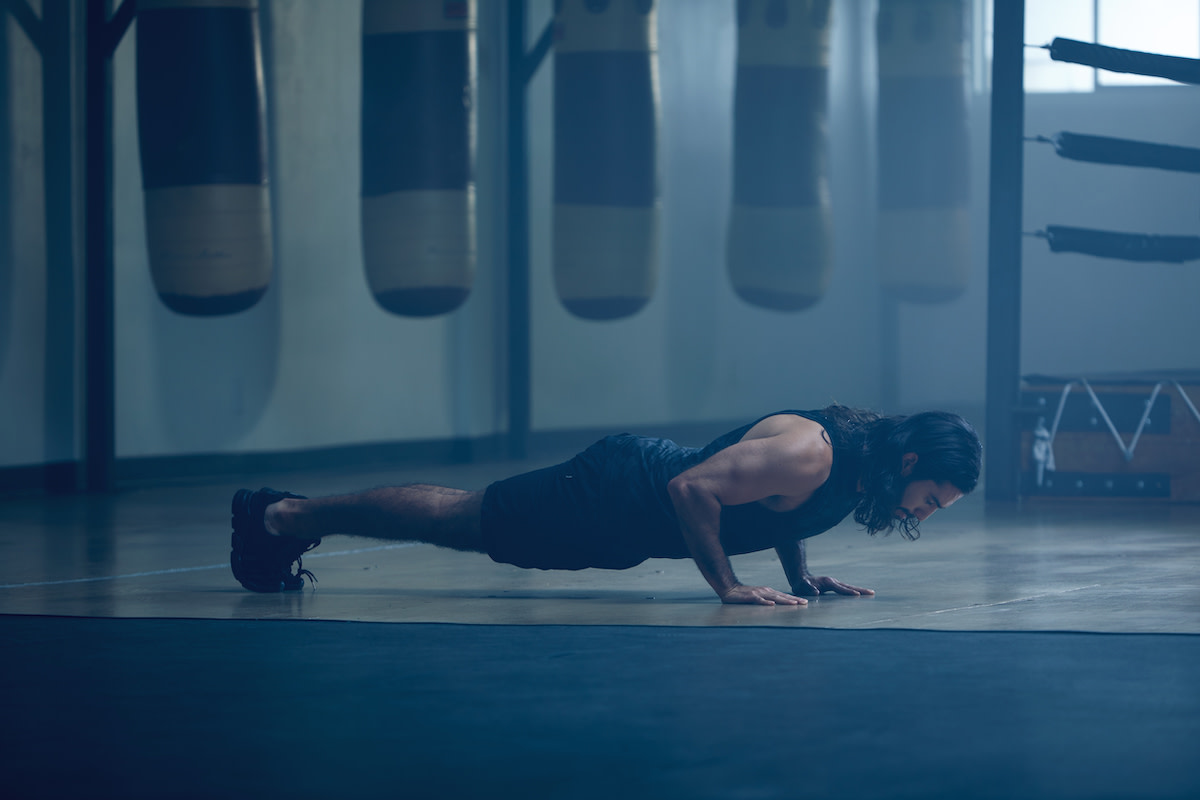Push-Ups Guide: How to Build Strength With Push-Ups
Written by MasterClass
Last updated: Sep 20, 2021 • 4 min read
Push-ups are one of the most convenient bodyweight exercises to incorporate into your strength-training routine.
Learn From the Best
What Are Push-Ups?
Push-ups are a compound exercise that works muscle groups throughout your entire body. Perform push-ups by placing your palms slightly wider than shoulder-width apart on the floor and holding yourself in a high plank position. While keeping your back and legs in a straight line, lower your body toward the floor, then push back up to the starting position.
3 Benefits of Doing Push-Ups
Regularly performing push-ups has a few key benefits:
- 1. Push-ups build your upper-body strength. Push-ups work multiple muscle groups throughout your upper body, including the anterior deltoids in your shoulders, the pectoral muscles in your chest, and the triceps in your arms.
- 2. Push-ups increase your core stability. With proper form, push-ups activate the stabilizer muscles in your midsection, including your abdominal muscles and lower back muscles. By engaging these stabilizing muscles, push-ups can improve your posture.
- 3. Push-ups are versatile. The standard push-up uses only your bodyweight, making it an ideal choice for a home workout. Push-ups can be modified to suit your fitness level, and they serve as good warm-ups for other compound exercises.
How to Do a Perfect Push-Up
For push-ups, begin by performing 2–3 sets of 8–15 repetitions, focusing on maintaining good form throughout all sets and repetitions.
- 1. Get into an all-fours position with your knees and toes flexed and in contact with the floor. Your hips should be over your knees. Your hands should be slightly wider than shoulder-width apart.
- 2. Grip the ground with your hands, and rotate your shoulders outward to engage your lats.

- 3. Straighten your legs to lift your knees off of the ground into plank position. Your legs should be hip-width apart or slightly wider.
- 4. Pre-tension your shoulders and hips while engaging your core. Squeeze your quads and glutes. Your chin should remain tucked throughout the movement, as if you were holding an egg under your chin. All repetitions should begin from this position.
- 5. For the downward movement, pull your chest toward your hands by bending your elbows. Your shoulder blades should retract as you lower toward the ground.

- 6. Lower your body until your upper arms are even with your back. Your elbows should be at a 45-degree angle away from your body, and your wrists should be under your elbows.
- 7. Pause for a second at the bottom of the movement.
- 8. While maintaining your alignment, initiate the upward movement by squeezing your chest and straightening your elbows.
- 9. Your shoulder blades should protract as you push to the top of the movement.
- 10. Finish the repetition by squeezing your chest and triceps.
6 Push-Up Variations
Once you’ve practiced the standard push-up, consider trying one of these push-up variations:
- 1. Knee push-ups: If you’re new to push-ups, start with an easier variation like the knee push-up. By keeping your knees on the floor during the full range of motion, you put less strain on your lower-body muscles.
- 2. Incline push-ups: Practice incline push-ups by raising your upper body with your hands on a bench or other elevated surface. Incline push-ups prioritize your chest muscles, putting less tension on your arms and shoulders.
- 3. Decline push-ups: This advanced variation requires you to elevate your feet on a bench or chair while holding yourself in the push-up position. Decline push-ups put more focus on your upper pecs than regular push-ups.
- 4. Plyo push-ups: This plyometric exercise incorporates an explosive movement at the top of the push-up. Practice plyo push-ups by lifting your hands off the ground before lowering yourself again.
- 5. Diamond push-ups: Perform diamond push-ups by bringing your hands close together to form a diamond or triangle shape below your chest. This variation specifically activates your tricep muscles.
- 6. Wall push-ups: This beginner-level variation puts less stress on your shoulder joints. Practice wall push-ups by standing in front of a wall and lowering yourself forward using the same movement pattern as a traditional push-up.
How to Work out Safely and Avoid Injury
If you have a previous or pre-existing health condition, consult your physician before beginning an exercise program. Proper exercise technique is essential to ensure the safety and effectiveness of an exercise program, but you may need to modify each exercise to attain optimal results based on your individual needs. Always select a weight that allows you to have full control of your body throughout the movement. When performing any exercise, pay close attention to your body, and stop immediately if you note pain or discomfort.
In order to see continual progress and build body strength, incorporate proper warm-ups, rest, and nutrition into your exercise program. Your results will ultimately be based on your ability to adequately recover from your workouts. Rest for 24 to 48 hours before training the same muscle groups to allow sufficient recovery.
Want to Dive Deeper Into Your Wellness Journey?
Throw on some athleisure, fire up a MasterClass Annual Membership, and get ready to sweat it out with exclusive instructional videos from Nike Master Trainer and GQ fitness specialist Joe Holder. Want to improve your cardiovascular endurance? Give Joe’s HIIT workout a go. Trying to get a little swole? He’s got a strength training workout for that. From fitness tips to nutrition hacks, Joe will have you feeling healthier in no time.


